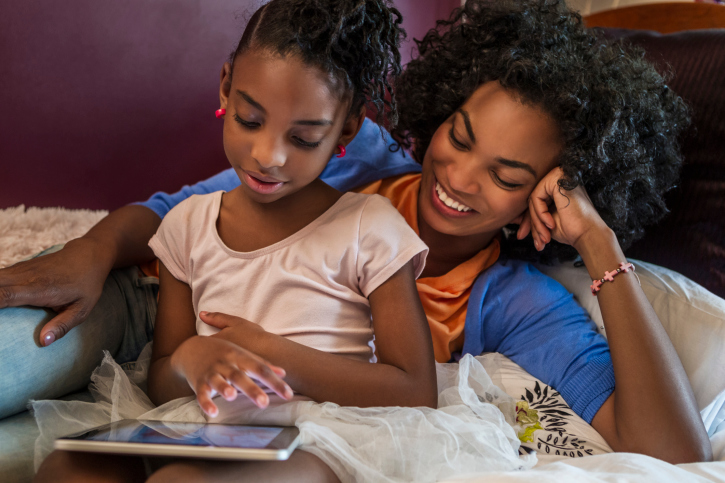 When my first-born was a baby, his father and I had one television and one computer: two “screens.” Nineteen years later, our family of five has two televisions, five smartphones, five computers and a handful of tablets.
When my first-born was a baby, his father and I had one television and one computer: two “screens.” Nineteen years later, our family of five has two televisions, five smartphones, five computers and a handful of tablets.
Monitoring and limiting kids’ screen time is a hot topic in the news with many recent articles covering each facet of the discussion from whether babies should be allowed to play on tablets (no) to whether violent video games cause kids to be aggressive (yes). As parents, we know that the digital age is here to stay, we know our kids can use technology in educational ways both at home and school, but we struggle to understand where the balance lies and how to limit time spent on electronics.
The start of a new school year provides us the perfect time to find that balance for our families. As this accompanying infographic shows, screen time is time spent:
- Watching TV
- Playing games on cellphone
- Using the internet with a phone or computer
- Playing video games
- Texting.
Excess electronic media use has been linked to health problems in kids including obesity and emotional problems. While the use of media can enhance classroom learning, excessive electronics use outside the school setting can decrease academic performance. Screen use at bedtime has been shown to disrupt sleep. And technology can often get in the way of family time.
Given these risks, it is important for parents to have a clear approach to electronics use in their homes. The American Academy of Pediatrics has an article to help you define a family media use plan. Here are some ideas to start with:
- Make mealtimes screen-free with TVs turned off and phones taken out of pockets, placed away from the table and set to silent (both ring and text notification off).
- Get homework done without cell phones.
- Don’t use electronics during the school week; avoid creating a dynamic where kids rush their schoolwork to get to their screen time.
- If homework requires a computer, have kids work on it in the kitchen or other common area.
- Meet with your child’s teachers to understand how they will be using technology in the classroom and for homework.
- Have kids earn screen time by equal time spent on physical activity or chores. Having them earn screen time by doing homework is less recommended. This is because of the importance of having kids see the intrinsic benefit to working hard to learn, not just rushing through homework to get their time online.
- Make bedtime screen-free; charge phones in the kitchen. Buy the kids an old-fashioned alarm clock!
The importance of being a role model for your child cannot be overstated. Our kids see us constantly on our phones and feel ignored; a recent study found:
- One-third of children felt that their parents spent equal or less time with them than on their phones
- Half felt that their parents checked their phones too often
- One-third (36%) felt their parents allowed themselves to be distracted by their phones during conversations
- One-third felt unimportant to their parents.
To help avoid this with your own kids, make a conscious effort to put down your phone when you’re with them. Learn how to set up a favorites list on your phone (for people who you really need to reach you like the school office) and turn on the do not disturb setting so that only the most important or urgent calls can get through when you are focused on your children.
Clearly, too much screen time is harmful, but it is important to also think about what your kids are doing online. Content matters! We can use screen time to learn, create and challenge ourselves or simply to veg out. Each of these has a place and time but mostly it is important for parents to be sure their kids’ screen time emphasizes the first three.
Technology is here to stay and we want our kids to thrive in this digital world. They can do this with our support and involvement. Start tonight at dinner: ask your kids what risks they see to technology use and how much screen time they think is healthy.
Additional Resources:
- Common Sense Media – an organization dedicated to helping kids thrive in a world of media and technology
- Policy statement from the American Academy of Pediatrics with recommendations for parents, schools and healthcare professionals.




